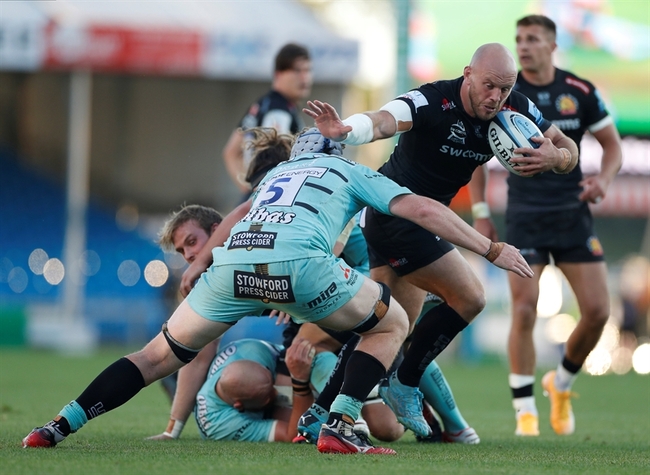You are viewing 1 of your 1 free articles
Pectoralis major tendon ruptures part II: Rehabilitation management

Most practitioners recommend surgical repair for PM ruptures, especially for athletes. Conservative management results in diminished peak force production and work capacity in the PM when compared to the unaffected side(1,2).
However, athletes who suffer only partial tears of the muscle belly or non-athletes who suffer partial tears of the tendon may achieve a reasonable outcome if treated conservatively. Because a protracted time between the injury and the repair makes the restoration of the torn tendon more difficult, specialists recommend early repair (within the first three weeks after injury)(3,4).
Surgical repair
Surgeons access the site via a five to eight-centimeter incision in the deltopectoral crease line. To determine the exact site of the tear, the incision and position must reveal the musculotendinous junction (MTJ). If the tendon has ruptured at the bone attachment, then suture anchors and drill holes are used to re-attach the tendon onto the bone. Typical full-tendon tears may need up to four suture anchors. More recently, a technique using one or two cortical buttons attached to the humerus showed excellent results and a faster return to full strength and contact sport(5, 6).Post-surgery rehabilitation
After surgery, the arm must stay in a sling or immobilizer for four to six weeks. Ruptures within the soft tissue components (muscle, MTJ, or within the tendon) may require a longer period of immobilization (six weeks) compared to tendon avulsions (four weeks). The is because a tendon to bone surgical attachment is more secure than within soft tissue repairs.Phase One Interventions – Protection Phase (Weeks 0-2)
The patient is immobilized in a sling and no passive or active movement for the first two weeks. The primary goal in the early stage is tissue protection to allow the sutured tendon fibers to heal.
Phase Two Interventions – Early Mobility Stage (Weeks 3-6)
As the surgical procedure does not enter the shoulder joint itself, the procedure is considered extra-capsular. Therefore shoulder joint effusion and intra-articular adhesions are not present. However, as the surgical technique does involve considerable excision of the soft tissue planes to access the torn pectoralis tendon, adhesions are common in the fascia and surrounding soft tissue. In this phase, encourage frequent and safe mobilization to prevent excessive adhesion formation that would result from complete immobilization. Gentle passive movement promotes collagen repair and to allows the scar tissue to heal along planes of stress(4).
From week three onwards, begin gentle passive range of motion into external rotation (with the arm by the side), flexion, internal rotation, and abduction (see table 1)(4). Once the patient achieves the desired passive range of movement, begin active movement within gravity-assisted/resisted positions. Initially, the therapist guides and limits the range to avoid the risk of accidentally opening up the shoulder beyond the desired range. When the patient appreciates the passive range limits, they may use that range actively in a slow and controlled fashion.
Start gentle scar tissue massage and friction massage through the PM muscle at this time to manage post-operative muscle tone and to mobilize the scar tissue. This may be painful in the initial period due to post-surgical trauma. As the sensitivity decreases initiate more aggressive deep cross friction. The other muscles that surround the shoulder and scapula may also benefit from deep massage since they have experienced shortening and immobilization as well.
Concentric or eccentric contractions are not allowed for the first six weeks after surgery. This is to avoid any traumatic disruption of the sutured muscle/tendon/bone complex. However, isometrics may start in the surrounding muscles with the arm kept in the ‘safe’ available range for that week. Isometric exercises including scapular setting, shoulder abduction, extension, and external rotation help maintain strength in the surrounding shoulder muscles.
Phase Three Interventions – Regaining Full Range of Motion (Weeks 7-12)
The goal for rehabilitation is to obtain full active and passive movement by 14 to 16 weeks post-operatively in tendon to tendon repairs and 12 to 14 weeks in the bone to tendon repairs(4).
As the range of movement improves from week six onwards, it may be necessary for the therapist to also start some direct glenohumeral joint mobilizations (AP, PA, and lateral glides) for glenohumeral joint health. It may also be necessary to mobilize the cervical and thoracic spines and the rib articulations, as these joint movements may also become restricted due to the early immobility.
Six weeks after surgery, the patient may start isometric PM contractions in a shortened position and to use muscle stimulators (initially in low contraction modes, such as atrophy mode). Progress the strength of the contraction as tolerated. Perform scapular exercises through all scapular ranges of protraction/retraction, upward/downward rotation, and depression/elevation. Slowly increase the external load in gravity-assisted and gravity resisted exercises into external rotation, abduction, and extension movements – as long as the arm does not exceed the allowed range for that week.
From week eight, start gentle TheraBand exercises for PM, such as shoulder internal rotation, adduction, and flexion. Furthermore, the patient may also start gentle proprioceptive exercises that keep the arm in a safe range of movement. These may be simple eyes-closed reach and feel drills that retrain positional awareness.
In the early stages of rehabilitation, preserve fitness by allowing the athlete to perform cardio exercises that do not the use of the arms, such as a stationary bike and water running with the arm kept against the stomach. Cardio activities that require arm motion below 90 degrees of shoulder flexion (rowing ergometer, cross trainer, running, etc.) can commence around week ten.
Table 1: Range of Motion Progressions(4)

Phase Four Interventions – Regain Strength Phase (Week 12-20)
From week 12, start traditional light dumbbell exercises to implement load into all planes of movement. The sequence of traditional strength training that safely allows adaptation in all shoulder muscles and protects the PM is:
- Horizontal pulling – bilateral row, one-arm row, prone flies (start at week 13)
- Vertical pushing – shoulder press, lateral and front dumbbell raises (start at week 14)
- Vertical pulling – chin-ups, pulldowns (start week 15)
- Horizontal pressing – bench press and all the variations (start week 16 – light loads)
To protect the PM, start loading exercises at 50% of pre-injury 1RM levels. There is one exception to this rule. Begin the horizontal pushing movements with a very light load and progress slowly to reach 50% 1 RM at six months after surgery(4). It may take nine to 12 months to achieve pre-injury levels of horizontal pushing strength. Avoid high load PM exercises under long levers (pec dips and flies) for the first six months. After six months begin with light or supported loads.
Utilize proprioceptive neuromuscular facilitation (PNF) repeat contractions at week 14 as long as the patient has full movement into abduction and external rotation (see figure 2). Begin with light therapist-provided resistance and progress to maximum resistance by week 20. The PNF pattern starts with the patient’s arm in flexion/abduction/external rotation. The therapist applies pressure in the patient’s hand and on the arm. The patient then actively contracts into adduction and internal rotation while the physio provides gentle resistance. The common program is three sets of 10 contractions. The therapist can increase their manual resistance as tolerated(5).
Figure 2: Proprioceptive neuromuscular facilitation D2 pattern of shoulder flexion, abduction, and external rotation (A) to shoulder extension, adduction, and internal rotation (B).

Begin plyometric drills (medicine ball chest passes and Body Blade) with light loads at week 16. Delay more aggressive plyometrics until the patient has reasonable bench press strength (+85% compared to the contralateral side). These include explosive push-ups and bench throws with a Smith machine bar.
Phase Five Interventions - Return to Sport (Week 20+)
This phase depends on the sport played. However, as most of the team-sport related PM tendon ruptures are found in rugby and American football, this is a sample timeline to follow regarding return to sport.
The key times/dates to implement return to sport features are;
- Week 8 – treadmill running (arm in a protected posture)
- Week 10 – treadmill running (short arm swing)
- Week 12 – unrestricted field running (not sprints)
- Week 14 – non-contact catch/pass drills and sprinting
- Week 18 – start controlled light contact training (6 weeks progression)
- Week 24 onwards – return to play if all other objectives are met.
Conclusion
Ruptures of the PM tendon are uncommon injuries. However, they do occur in sports such as bench pressing, wrestling, rugby, and skiing. The majority of complete and incomplete ruptures require surgery to establish congruency in the muscle-tendon fibers, within tendon fibers, or bony attachments. Rehabilitation and return to sport typically take six months or more for the active athletic population. The rehabilitation is comprehensive and involves restoring range of movement, strength, and function.References
- Am J of Sports Medicine. 1992. 20; 587-593.
- Knee Surg Sports Traum Arthro. 2000. 8: 113-119.
- Acta Orthop Belg. 2005. 71; 107-110.
- North American Journal of Sports Physical Therapy. 2007. 2(1). 22-33.
- Voss DE, Ionta MK, Myers BJ. Proprioceptive Neuromuscular Facilitation. Patterns and Techniques. Philadelphia, Harper & Row Publishers, 1985.
- Arthrosc Tech. 2012 Sep; 1(1): e119–e125.
Related Files
Further reading
Newsletter Sign Up
Subscriber Testimonials
Dr. Alexandra Fandetti-Robin, Back & Body Chiropractic
Elspeth Cowell MSCh DpodM SRCh HCPC reg
William Hunter, Nuffield Health
Newsletter Sign Up
Coaches Testimonials
Dr. Alexandra Fandetti-Robin, Back & Body Chiropractic
Elspeth Cowell MSCh DpodM SRCh HCPC reg
William Hunter, Nuffield Health
Be at the leading edge of sports injury management
Our international team of qualified experts (see above) spend hours poring over scores of technical journals and medical papers that even the most interested professionals don't have time to read.
For 17 years, we've helped hard-working physiotherapists and sports professionals like you, overwhelmed by the vast amount of new research, bring science to their treatment. Sports Injury Bulletin is the ideal resource for practitioners too busy to cull through all the monthly journals to find meaningful and applicable studies.
*includes 3 coaching manuals
Get Inspired
All the latest techniques and approaches
Sports Injury Bulletin brings together a worldwide panel of experts – including physiotherapists, doctors, researchers and sports scientists. Together we deliver everything you need to help your clients avoid – or recover as quickly as possible from – injuries.
We strip away the scientific jargon and deliver you easy-to-follow training exercises, nutrition tips, psychological strategies and recovery programmes and exercises in plain English.







